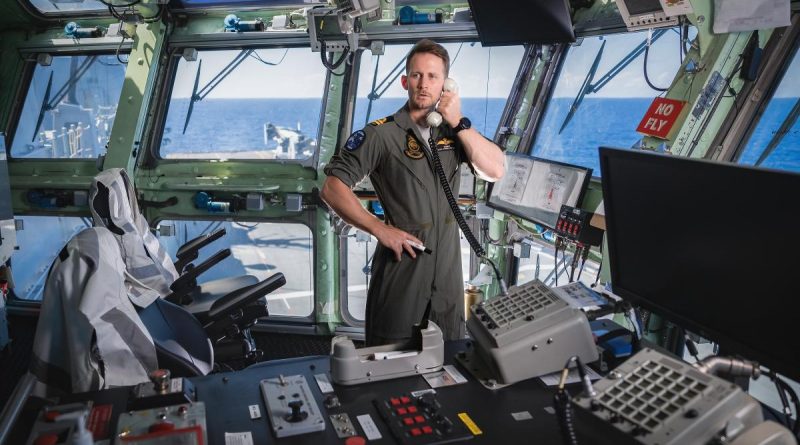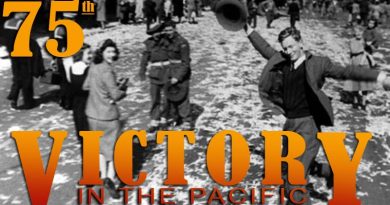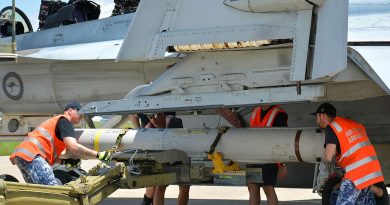Keeping an eye on air traffic

The flight deck of HMAS Canberra has seen many international aircraft land and take-off during Exercise Rim of the Pacific (RIMPAC) 2022.
CAPTION: Lieutenant Samuel Laidlaw controls air traffic from the flight bridge on board HMAS Canberra during Exercise Rim of the Pacific (RIMPAC) 2022. Story by Lieutenant Nancy Cotton. Photo by Leading Seaman Matthew Lyall.
Lieutenant Sam Laidlaw, one of Canberra’s flight control officers, is responsible for air movements on and off the ship and said it has been a great opportunity to work with international partners and understand the differences in operating procedures.
“Whilst preparing to conduct flying operations I speak with the officer of the watch who is driving the ship to make sure we have a shared understanding of the intended sequence of events for the day,” Lieutenant Laidlaw said.
“Together, we establish a plan for deconflicting concurrent operations and develop a plan that will put us on the right course to achieve the ship’s helicopter operating limits, or in the case of the current aircraft we have embarked being the MV-22B ship’s tilt rotor operating limits (STROL), which ensures appropriate wind speed and direction for flying operations.”
During RIMPAC, Canberra has embarked two United States MV-22B Osprey military aircraft and their crews.
“The purpose of RIMPAC is about learning to work together with partner nations and building on lessons learned. In aviation operations communications are usually highly standardised, which helps to remove ambiguity in a dynamic environment,” Lieutenant Laidlaw said.
“By integrating with international partners, we gain a much better appreciation of our differences, which allows us to learn from each other, communicate better, and operate together more seamlessly.”
One lesson which has provided some interest is the true north and magnetic north point of difference.
At sea the Royal Australian Navy’s air operations are conducted in true north, which was identified during the first recovery of the MV-22B.
Lieutenant Laidlaw explained that when the ship was driving its course making sure they were in the STROL, what the MV-22B crew on board the aircraft saw on their heading indicator was about a 9-degree variant.
“This came down to us operating in true north and the US pilots operating in magnetic north,” he said.
“In this instance, it proved to be inconsequential since all operations with visiting aircraft are conducted with good visibility and communications, but now we know we can account for this on both sides moving forward and for planning with other international aircraft.”
.
.

.
.





